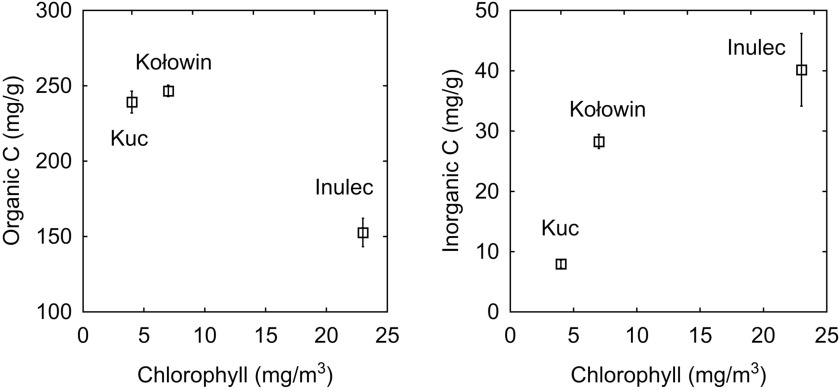
Authors
Lech Kufel, Małgorzata Strzałek, Elżbieta Biardzka, Marcin Becher
We aimed to demonstrate different input of organic and inorganic carbon, nitrogen and phosphorus from three main groups of primary producers (phytoplankton, charophytes and vascular submerged macrophytes) to respective lake sediments. Studies were carried out in one eutrophic and two mesotrophic lakes. Samples of sediments were taken from profundal and from littoral zones, the latter divided into such overgrown by charophytes and others covered by vascular submerged macrophytes. We applied a stoichiometric approach to illustrate variable functional carbon to nutrients relationships. Among profundal sediments, the lowest organic to inorganic carbon ratio was found in sediments from the eutrophic lake due to precipitation of calcium carbonate during algal blooms. Extremely low inorganic carbon input to profundal sediment of one of the mesotrophic lakes may be explained by low phytoplankton production but also by dissolution of once deposited calcium carbonates. Charophyte-dominated littoral sediments contained significantly more inorganic carbon than other littoral and profundal sediments. Comparison of stoichiometric ratios between plant standing crop and underlying littoral sediments showed significant enrichment of sediments in nitrogen manifested by reduction of organic carbon to total nitrogen ratio during plant decomposition taking place both in charophyte and in vascular plant stands. We also attempted to divide phosphorus pool in sediments into organic P and calcium-bound P present in charophyte stands and in profundal sediments of eutrophic lake. In the former, calcium-bound P was estimated at 17–19% of the total P pool while in profundal sediments it amounted 42% of the total P. This difference suggests that calcium carbonate settling during algal blooms in a eutrophic lake may be more effective in P trapping than calcite encrustations covering charophyte plants in littoral sites. In conclusions, we underline the need of considering often neglected inorganic fractions of carbon and phosphorus to get better insight into carbon and nutrient burial in lake sediments.
